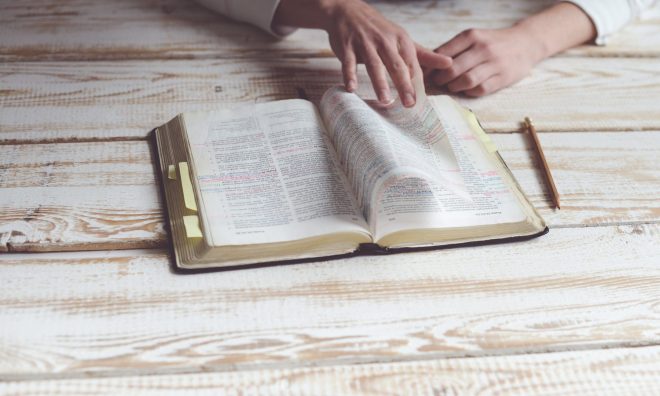
Encore Post: In our post on Justification, we talked about the very good news that Jesus saves us by grace alone, through faith alone for Christ’s sake alone. When God declares us “not guilty” from his throne, we really are “not guilty” for our sins and will not be punished for them. This is because Jesus was punished in our place on the cross. We are now holy in God’s sight, as if we had never sinned in the first place.
There is one problem — we still sin. In one setting of the Divine Service in the Lutheran Service Book, we recite to each other during confession a passage from the First Letter of St. John, which makes this clear. We’re fooling ourselves if we think we don’t sin. (1 John 1:8-9) St. Paul discusses the war within himself between his new Adam and his old Adam in Romans 7. God solves this problem by sending his Holy Spirit to make us holy. This process is called sanctification.
The word is borrowed directly from the Latin word that means, “to make holy.” Lutheran theologians use it two ways. In general, sanctification includes everything the Holy Spirit does to make us holy from when he uses baptism and the preaching of the gospel to create faith in our hearts to the day we die or Christ returns and he purges sin from our lives forever. Because Catholics believe a person isn’t fully saved until sin is completely gone from their lives, they include time in purgatory after death. Lutheran theologians prefer to use it in a more specific way to everything the Holy Spirit does after God justifies us.
When we talk about sanctification this way, we talk about it as a process. Using God’s word and the Lord’s Supper, the Holy Spirit changes our hearts. Now we want to please God — not to bribe him to save us, but to serve God because we love him. We now do truly good works and these in turn help us in the battle between our sinful self and our saintly self. Even then, these works are not strictly ours — God prepares them for us to do in the same way a teacher prepares homework for us to do. (Ephesians 2:10) This struggle lasts all our lives, but is complete the day we die. On that day, Jesus will greet us and say, “Well done, good and faithful servant!” and welcomes us into his eternal kingdom.
Rev. Robert E. Smith
Concordia Theological Seminary
Fort Wayne, Indiana
©2019 Robert E. Smith. All rights reserved. Permission granted to copy, share and display freely for non-commercial purposes. Direct all other rights and permissions inquiries to cosmithb@gmail.com


